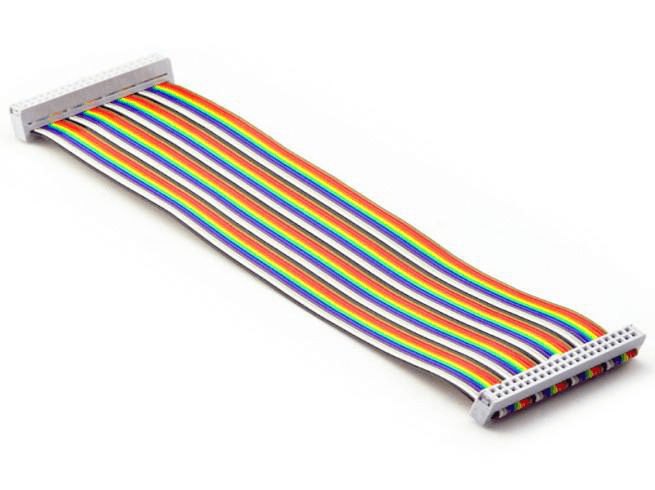Exclusive Bonus: Need Ribbon Cables Assembly? Contact our support team today to get started. Quick click>> With the technological advancements and increased innovations in the engineering world, the electronics industry is increasing daily. The technological world’s growth has led to foundations for many incredible opportunities for engineers, designers, and technicians.
For moving with the electronic world’s pace, you need to remain updated with the circuitry, manufacturing, and components. These days, readers want to learn about ribbon cable’s manufacturing considerations, issues with ribbon cables, and what connector types are suitable for ribbon cables.
This guide designs for the ribbon cable that is also known as the flat ribbon cable. It will also discuss the basics of ribbon cables like ribbon cables, types of ribbon cables’ connectors, how to select ribbon cables, and how to repair damaged ribbon cables and how to buy them.
By keeping in view the beginners and solder-mask designers who are just starting their work on ribbon cables.
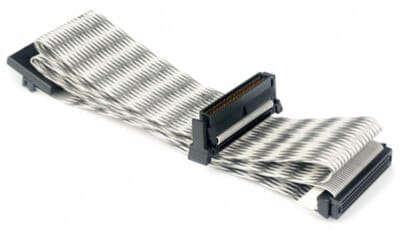
CHAPTER 1: What Are Ribbon Cables
1.1 Definition:
Ribbon cable consists of multiple conducting wires placed in a parallel geometry on a flat plane. We know the ribbon cable also as a multi-wire planar cable.
Fashioned with thin and flat multi conducting wires, using ribbon cables for making external connections inside any electronic system is standard.
For example, a 34 – wired ribbon cable is used to connect a floppy disk and a motherboard. A 40 wire ribbon cable connects the IDE CD drive, and IDE hard disk embeds its relationship through 80 wire ribbon cables in an electronic system. Given below is the figure of a ribbon cable.
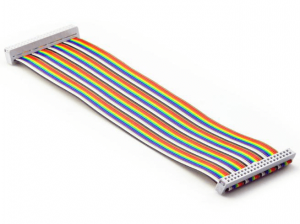
Figure 1: Ribbon Cable
1.2 Material and Specifications:
-
Material used:
The most common material used for making ribbon cables is silicone rubber. Due to silicone’s flexible and elastomeric nature, ribbon cables are molded into a flat cable that comprises multiple conductors of the same size.
Other than silicone rubber, the insulating materials used for making ribbon cables are Teflon, olefin materials, and PVC. The stranded copper wire is commonly known as one of the most used cables for making ribbon cable assemblies. They are available in sizes ranging from 18 AWG to 34 AWG.
When you are purchasing ribbon cables, ensure that you know what type of shielding it exhibits. It is one of the most crucial cable material aspects which need to be considered. Shielding makes sure that the flow of current is smooth within the ribbon cable. There are different types of shielding available in the market. The shielding types include braid, foil, combination braid, foil, and spiral shield. So the table is given below shows the advantages and disadvantages of different kinds of ribbon cable shielding:
Shielding |
Advantages and disadvantages |
|---|---|
| Foil Shields | Foil shields are commonly used in MATV, CATV, and computer I/O cables. Advantages of the foil shield include incredible coverage, which is almost 100% lightweight and affordable. On the contrary, the disadvantages of foil shields state that the value of DC resistance is high and the mechanical strength is low. |
| Brad Shields | A braid shield is commonly used for terminating process interconnects, or you can say for controlling applications. Advantages of braid shields include extreme flexibility and excellent structural integrity. Disadvantages of braid shields include heavyweight and lack of full coverage. |
|---|---|
| Spiral Shield | The spiral shield is used in retractile cords, audio ribbon cables, and microphones. Advantages include extreme flex life and increased flexibility, whereas disadvantages state that this type of shield is not useful if the audio frequency range gets over the field. |
| Combination Shields | Combination shield is commonly used in the computer I/) ribbon cables, networking, CATV, and MATV. Advantages state that this type of shielding present in ribbon cable has 100% foil coverage. On the other hand, disadvantages include high cost as compared to other shields present in ribbon cables. |
|---|
-
Specifications:
As far as specifications are concerned, ribbon cables are specified by two values, i.e., the number of conducting wires and spacing. Spacing describes pitch which shows the distance between two adjacent wires. The pitch spacing is normally found with 1mm, 0.025″, 0.050″, 0.100″ and 0.156″. It should note that you can customize spacing or pitch according to the desired requirement.
On the contrary, the number of conductors of the cable assembly is also described regarding “ways,” which explains how many positions a connector can take. There is a fixed standard of connectors’ positions, i.e., 4, 6, 8, 9, 10, 14, 15, 16, 18, 20, 24, 25, 26, 34, 37, 40, 50, 60, 64, and 80 because they are restricted by the set number of conductors or ways in assemblies.
For avoiding reverse connections in the ribbon cable, the technique of color-coding was used. Each edge of the ribbon cable comes marked with a red stripe, indicating that one connects to the connector. Color coding makes easier identification of conductors. These cables are commonly known as hippie cables.
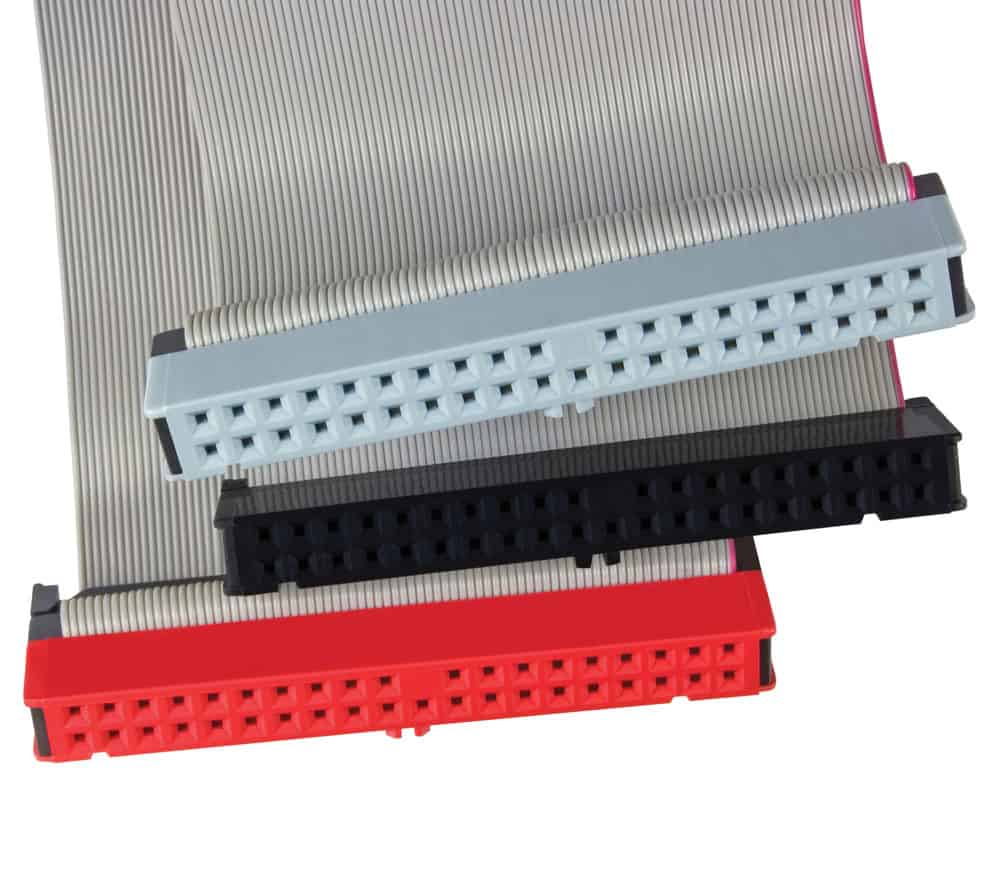
-
Usage:
There are plenty of different applications where you can use ribbon cables. Assemblies of ribbon cable are widely used in computer’s internal components and parts like floppy drives, hard drives, and CD drives.
You can also use ribbon cables to build connections between moveable components like medical equipment, robotics, print heads, measurement equipment, and other electronic products.
One of the most significant advantages of ribbon cables’ usage is their termination ease. You can bring mass termination with ribbon cables by using an IDC connector by keeping fixed, constant, and controlled spacing.
If you have limited space, the ribbon cable is the best choice for your application. Due to the flat structure and flexibility, you can run within the straight run’s implementations without any problem.
The only disadvantage of ribbon cables is that they do not allow any flexing sideways. If you need any change in direction for your application, ribbon cables will not help so well. And you can still bring changes to its right angle by bringing a fold in the cable.
CHAPTER 2: Ribbon Cables Connectors
2.1 Ribbon cable connectors’ types:
The name commonly knows ribbon cable connectors of IDC connectors. IDC connectors use a sharp forked contact due to which they pass through insulation, and direct contact with the conductor is then established.
It would help if you remembered that this process is typically taking place at assembly’s both sides and ends. Identification of IDC connectors is based on the number of rows, several pins, and pin spacing/pitch.
Types of ribbon cable connectors:
Common types of ribbon cables embellished with IDC termination include DIL headers, PCB transition headers, DIN 41612 connector, microribbon, D – subminiature connector, and BT224 connector.
Classification of ribbon cable connectors:
The rating of ribbon cable connectors is as under:
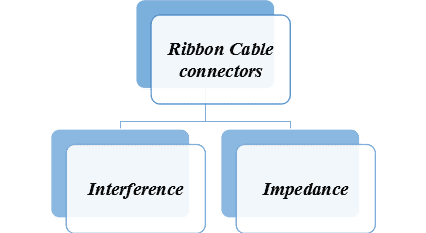
-
Interference:
The name commonly knows ribbon cable connectors of IDC connectors. IDC connectors use a sharp forked contact due to which they pass through insulation, and direct contact with the conductor is then established.
Interference, in general terms, is defined as any mode of instruction that is causing disturbance or distortion. Keeping in view ribbon cable connectors’ intervention, we note that these cables play a tremendous role in connecting two devices. However, there have been seen a couple of problems in the case of the analog area.
In the 1980s, ribbon cable also behaves like highly efficient antennas and emit signals at random intervals within the full range of the electromagnetic spectrum.
These signals transmitted at random intervals were producing interference and distortion with television reception. Due to this interference issue of ribbon cable connectors’ types, connecting two devices got limited.
You can use a “naked” ribbon cable within the system’s case but ensure that while connecting two boxes, these must be grounded.
-
Impedance:
Impedance is defined as the circuit’s opposition which is shown on current at the time when a voltage is applied. For example, the resultant impedance within a ribbon cable is going to be 110 Ω to 130 Ω if you are using 26 AWG wire with a pitch of 0.050″. For understanding ribbon cable connectors’ interference, you need to understand impedance.
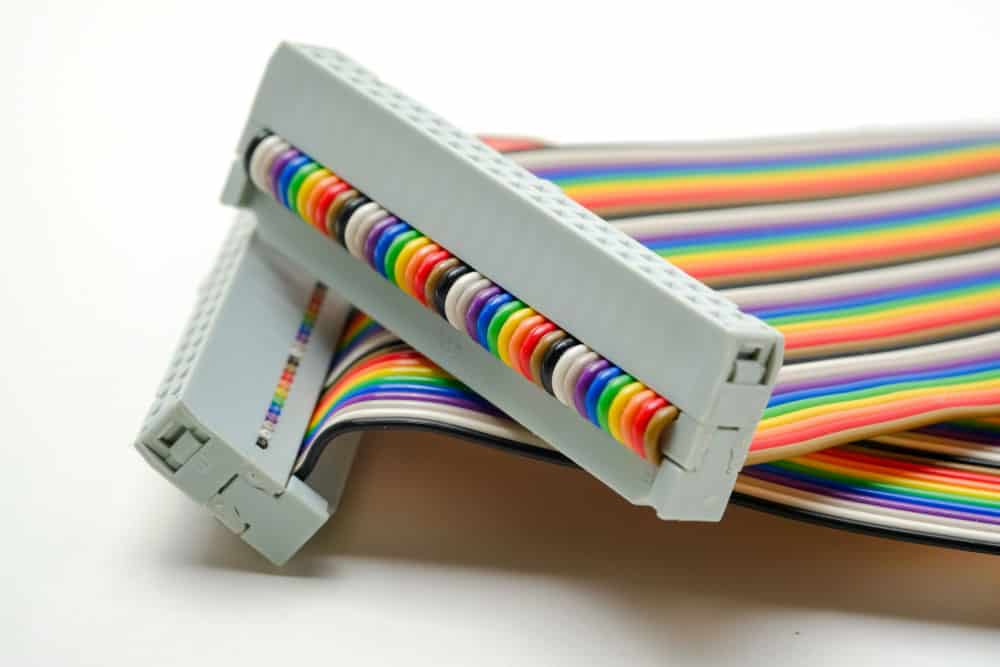
2.2 How to make a selection for ribbon cable?
You must know about how you can make a selection of ribbon cables. Given below is the table that comments on the critical factors to consider while buying ribbon cable:
| Factors | Comments |
|---|---|
| Pitch | Pitch is mainly about the spacing between multiple conducting wires of the ribbon cable. Select cable according to the desired pitch. The standard pitches available are 0.5mm, 1mm, 1.25mm, and 2mm. |
| Temperature (Extreme) | Standard ordinary ribbon cables usually process at nominal temperatures. However, if you need to operate them at a higher temperature, you will require a silicon jacket. |
|---|---|
| Flexibility | Though ribbon cables are extremely flexible, you can customize them if you need more flexibility under your design. |
| Life expectancy | It is highly recommended to go for ribbon cables tested for exhibiting a long life and high likelihood. |
|---|---|
| Resistant to Fire | Ribbon cable must be immune to fire. It is not only required for successful processing but also your safety and health. |
CHAPTER 3: Ribbon Cables Types
3.1 Types of Ribbon cables:
Ribbon cables consist of different types. So some of the ribbon cable types are as under:
-
IDE ribbon cable:
IDE ribbon cables are found in the following two categories:
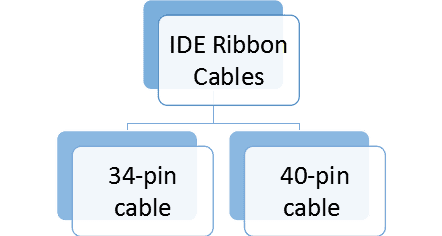
34 – pin cable is usually used for floppy drives. On the other hand, a 40 – pin cable is used for optical drives and hard drives. The figure shows both of these IDE ribbon cables.
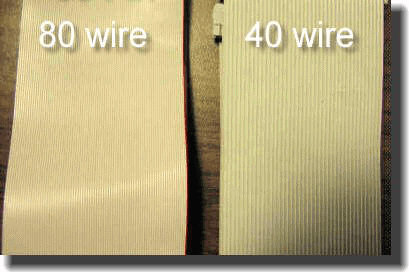
Figure 2: IDE ribbon cables
-
DSI ribbon cable:
Drive Serial Interface is abbreviated as DSI. DSI ribbon cable is used to make the connection between communication adapters and peripherals. You will see an RS485 serial port which is built on a DSI ribbon cable.
-
HDMI ribbon cable:
HDMI ribbon cable is known for its lightweight and is considered ideal for applications that are restricted with limited space. As this type of ribbon cable is flexible, it makes sure that the strain produced is minimum.
HDMI ribbon cables are properly shielded and are embedded with plated HDMI connectors. These connectors are responsible for providing high-quality audio and videos.
You can use HDMI ribbon cable for connecting cameras to HD display monitors, HDMI to AV video converters, and wireless transmitters.
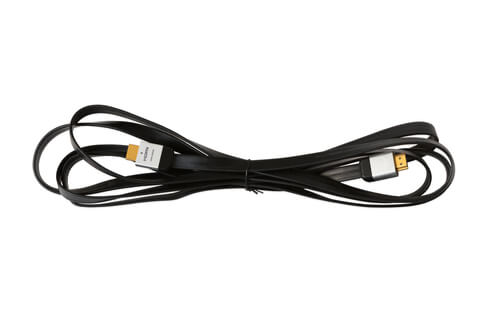
Figure 3: HDMI Ribbon Cables
-
Raspberry Pi ribbon cable:
Raspberry Pi ribbon cable Is specially designed for connecting Raspberry Pi or to any Raspberry source. The interface these ribbon cables use is called the CSI interface. These cables exhibit a flat structure and are commonly plated with the tin-copper conductor. They come with white PVC insulation and polyester supporting tape. You can use these cables as a replacement cable for the Raspberry Pi camera. The figure shows the raspberry Pi ribbon cable
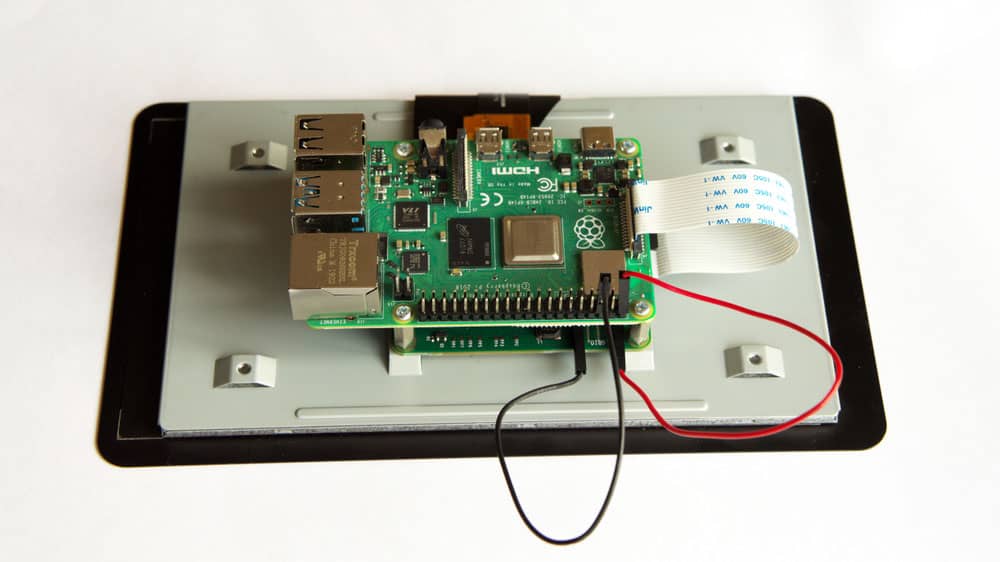
.Figure 4: Raspberry Pi ribbon cable
CHAPTER 4: Ribbon Cables Repair
Ribbon cables are delicate and are sometimes easily breakable. The process of repairing ribbon cable is lengthy, and also it needs much concentration. So for fixing the ribbon cables, you need to follow the following steps:
- The first step for repairing the ribbon cable is exposing the ribbon wire’s ends. For this, you cause sandpaper of (600) grade. You can also use a good razor for this step.
- Abrade the insulation for about 1 – 2mm. Remember that you need to do this on only one side of the ribbon. You can use some sharp pins or a continuity checker to now ensure that you can now access the wire.
- The side which does not require to be abraded should be stick to the broken cable back by using flexible adhesive tape. During this process, you need to align the broken pieces to be as close to each other as possible.
- Now cut two more pieces of tape and stick them on the ribbon cable’s top. It should be the stick so that it is wrapped around and underneath the tape. A small distance or gap must be left at the exposure point of wires.
- The final step is bridging the cables that are broken. You can do this step by using conductive epoxy resin. One of the most commonly used conductive epoxy resin is silver–loaded resin. You can get it quickly from any electronic shop.
Below are some pictures of the process that will help you gain some idea regarding the ribbon cable repair process.
CHAPTER 5: Where to buy and custom Ribbon Cables?
For the reason that we are manufacturing ribbon cable assemblies for many years. So we have a good range of different ribbon cables that are available in various lengths. Most noteworthy, We are here to add value to your business and your projects.
There are plenty of distributors and manufacturers of ribbon cable assemblies present in the market, but selecting the right distributor is hard. We are the best-known distributors, and we ensure that your choice for buying ribbon cable from us is right. Our prices as compared to the electronic market for ribbon cable are low. We are providing complete production facilities in the country.
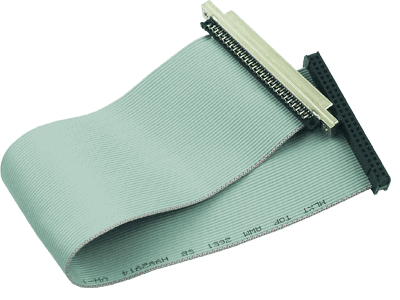
Figure 5: Cloom Custom Ribbon Cable
Our complete services for ribbon cable purchase range from design, drawing, prototyping, and mass production. We are known specialists, distributors, and manufacturers dealing with connectors, subassemblies, boxes, looms, harnesses and cable assemblies, and so on.
You should trust entirely in our ribbon cables’ quality as our company’s ideology revolves around the quality of the product. We keep in high standards of quality, and we go out of the way to meet our customer’s requirements. Other than ribbon cables, you can contact us for other electronic parts and components, too, like plastic parts, metal parts, LEDs, transformers, cables, power supplies, and PCB boards. We guarantee that our company is the right place for you to buy ribbon cables at the best possible prices with the full range of options.
Conclusion
If you are looking to get high-quality ribbon cable and coaxial cables, contact us as we know the electronics market’s industry leader. We customize the designs and prototypes of wires right following your needs and project needs, and business needs. Whatsoever your specifications are, you can give us a call, and we will get back to you with the exact thing you want. Our services are available 24/7 at our online website. You can contact us at any time for your project needs. We will make sure that you got the top quality and improved performance. So, visit our website today and book your desired cables. Try us!


